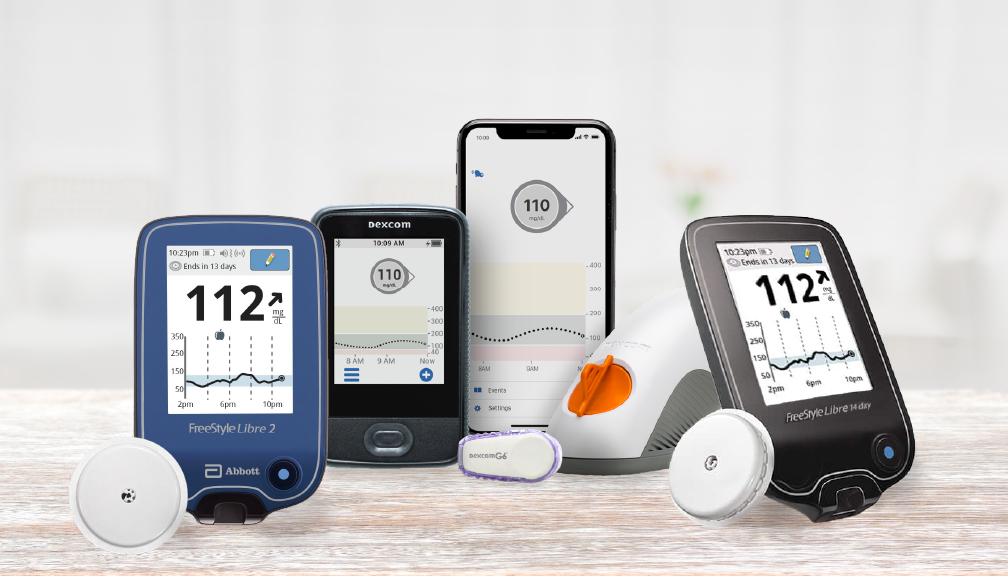Introduction
New Research on the Use of Professional CGM in Type 2 Diabetes
The potential benefits of using professional continuous glucose monitoring (CGM) devices among persons managing type 2 diabetes (T2D) with noninsulin treatments are highlighted in new research findings published in Clinical Diabetes. According to the study, these sophisticated monitoring techniques may play a critical role in enhancing glycemic management, providing a vital avenue for improved treatment outcomes.
The Traditional Approach and Its Limitations
Identifying and Correcting the Shortcomings of Traditional Blood Glucose Monitoring
Individuals with T2D who transition to insulin therapy have traditionally relied on self-monitoring of blood glucose levels using traditional blood glucose meters and test strips. However, unless the gathered data promotes meaningful lifestyle improvements or allows active medication management through shared decision-making with healthcare professionals, this self-monitored strategy may fall short of achieving optimal glycemic objectives. Recognizing this problem, continuous glucose monitoring devices (CGMs) appear as a viable tool for assisting patients in meeting their glycemic goals.
Professional CGMs: A Promising Solution
Professional Continuous Glucose Monitoring Systems Increase Access
Individually owned conventional personal CGM installations have cost and accessibility constraints. Professional CGM systems, which are clinic-owned devices that are temporarily provided to patients, overcome these limitations by providing access to individuals who might otherwise be unable to afford a CGM. These professional CGMs work by continually collecting and transmitting glycemic data to healthcare doctors, allowing them to study glycemic patterns and make specific alterations to treatment approaches and lifestyle choices.
If you want to see either you or a friend qualify for a CGM, Fill out the form here.
Evidence and Objectives
Evaluating the Impact of Professional CGM Adoption
Previously, researchers published evidence that professional CGMs can lead to improved glycemic control in persons with T2D. The current study, which is a retrospective observational database analysis, aims to uncover the real-world potential of professional CGM adoption among T2D patients who have suboptimal glucose control while on two or more noninsulin anti-diabetic treatments. More information about Hypoglycemia Unawareness can be found here.
Primary and Secondary Endpoints
Analyzing HbA1c Levels and Related Outcomes
The primary study goal is to assess the change in HbA1c levels, which is calculated by averaging available HbA1c values from both the baseline and follow-up periods. Secondary objectives include changes in drug use across different classes, insulin initiation during the follow-up period, and HbA1c changes among patients who started or did not start insulin therapy during the same timeframe.
Read Guide about Wegovy Dosage Guide: The Best Way For Weight Loss
Key Findings and Implications
Professional CGMs and Improved Glycemic Control
Endocrinologists administered CGMs in 39.9% of cases in the study population of 15,481 T2D patients (with 707 using professional CGMs), whereas internal medicine physicians, family practitioners, or nurse practitioners prescribed CGMs in 21.2% of cases.
Participants who used professional CGMs saw a significant mean drop in HbA1c of 0.83% (from 8.70% to 7.87%), while non-CGM users saw a more modest decrease of 0.32% (from 8.56% to 8.23%). A statistically significant difference-in-differences estimate indicated a substantial -0.51% change in HbA1c in favor of the professional CGM group.
Insulin Initiation and CGM Usage
Professional CGMs and Initiating Insulin Therapy
During the follow-up period, 19.8% of professional CGM users started using insulin (with 15.8% using basal insulin), compared to 10% of non-users. HbA1c values in the professional CGM cohort decreased by -0.57% among insulin initiators, whereas non-users had a minor 0.13% increase. A significant difference-in-differences estimate for HbA1c change, at -0.71%, highlighted the beneficial benefit of professional CGM use.
Concluding Remarks
Improving T2D Management Through Professional CGM Integration
According to the study, “[professional] CGM use among adults on noninsulin therapies is associated with improved glycemic control, and thus may be a tool that healthcare providers can leverage to aid patients in achieving their glycemic targets.” While the researchers acknowledge some study limitations, such as the relatively smaller professional CGM user cohort, the lack of socioeconomic status data, and the use of only three professional CGM systems, they emphasize that large-scale observational health data can effectively supplement randomized controlled trials in elucidating real-world treatment efficacies.
In Conclusion
Embracing Professional CGMs for Optimized Glycemic Management
Finally, this study supports the introduction of professional CGM systems into the treatment regimens of persons with T2D who are receiving noninsulin treatments. Healthcare practitioners can empower patients to achieve improved glycemic control and then work toward attaining their particular glycemic goals by leveraging the power of continuous glucose monitoring.


